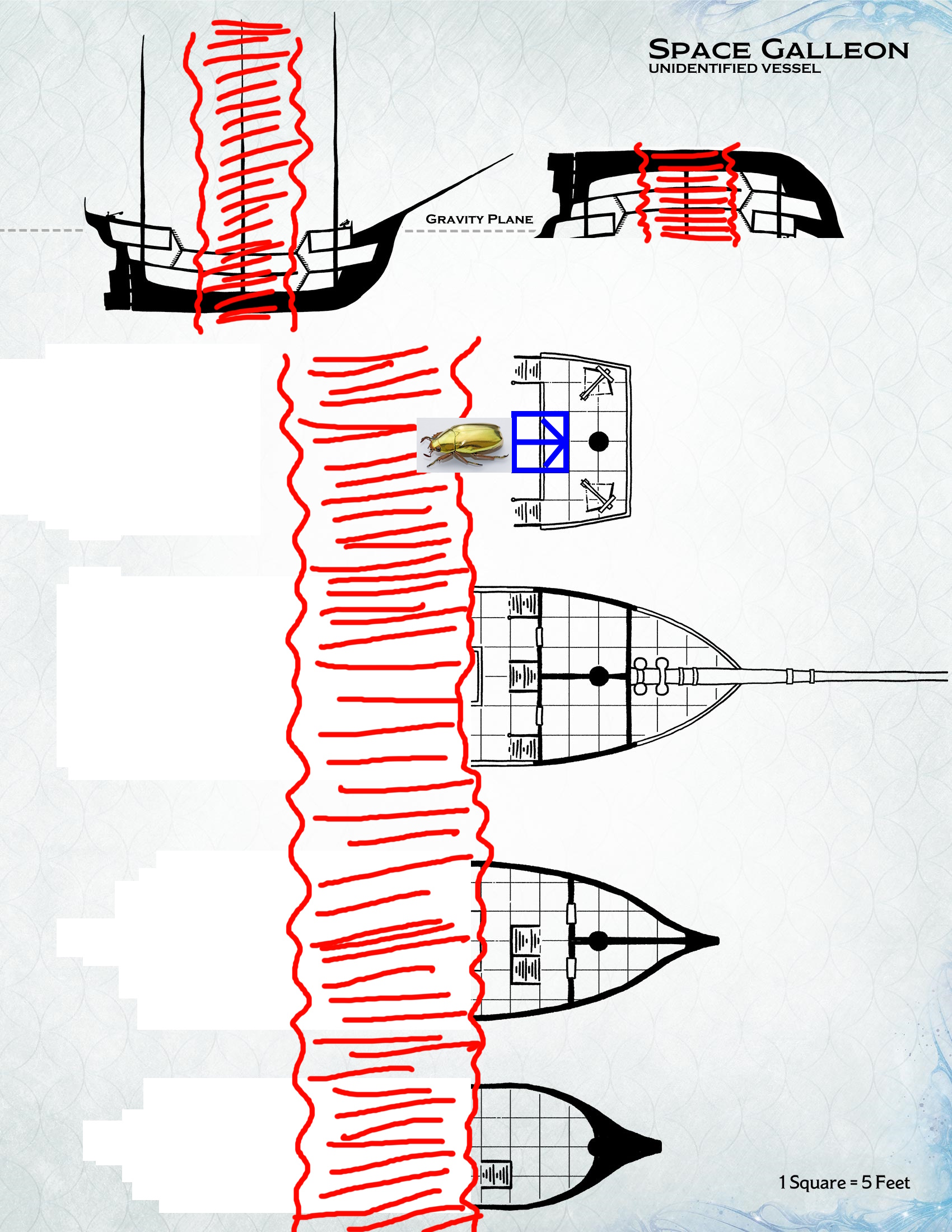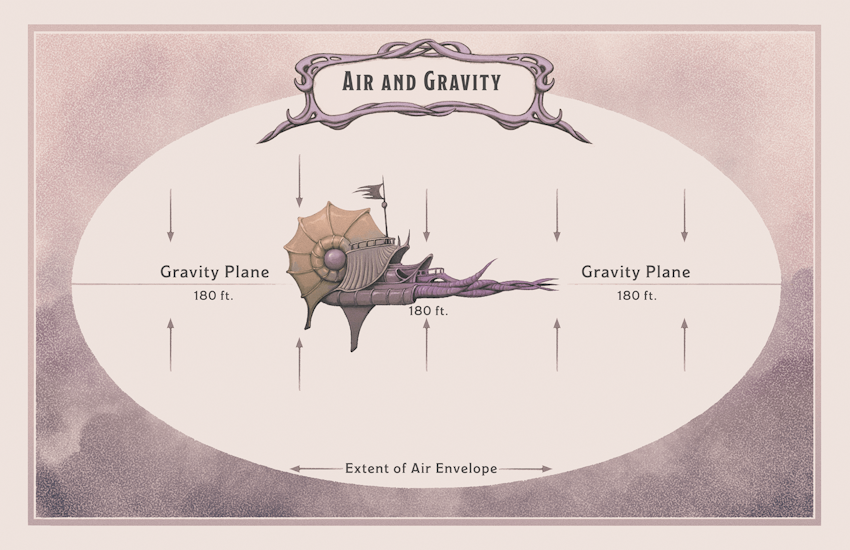Gravity Planes
"If you start to fall overboard while you're fighting, grab your opponent and take him with you. Then you can pound on him while your're bobbing through the gravity plane like a cork."
— Mongo Garth, zero-gravity combat instructor
Most residents of Wildspace recognize that every physical object has its own gravity and assume that the direction of that force was always towards whatever was most convenient for sentient life. For planets, this was always toward the center of mass, but for spelljammers and other space objects, such as asteroid cities, the force was usually perpendicular to a horizontal plane.
In Wildspace and on The Astral Plane, gravity is an accommodating force, in that the direction of its effect seems to be “that which is most convenient.” For an object the size of a planet or moon, gravity pulls everything toward the center of the body, meaning that creatures can stand upright anywhere on the surface, and dropped objects fall perpendicular to the surface they land on. However for smaller objects, such as spacecraft, gravity doesn’t radiate from a point but rather from a plane that cuts horizontally through the object and extends out as far as its air envelope.
Much debate surrounds the true nature of gravity planes. Many knowledgeable scholars of wildspace recognize that gravity planes are not natural occurrences, as with the gravity of planets, but rather the result of the special magic of spelljamming helms. Their studies have led them to believe that despite their truly astronomical size, 'crystal spheres' (such as Realmspace) are thought to be without gravity. Other sages, explain that the sphere's plane of gravity was compressed to a single point at the very center of the sphere, where the sphere's primary rested.
Application of Gravity Planes in Everyday Life
Some spelljamming vessels take advantage of these two sides in their craft designs, but most sentient creatures prefer to have only a single "up" and do not build inhabitable decks on the "bottom" side.
One of the main reasons for this "single-side" preference, was the fact that the force from a larger object's gravity plane would overcome and negate a smaller object's plane. Entering a planet's gravity well, for example, would cancel the effects of a spelljammer's gravity plane so that only the planet's gravity could be felt. Anyone walking on the bottom of a spelljammer when nearing a planet would thus plummet to the ground. This same issue can occur when a smaller spelljammer entered the gravity plane of a larger vessel. Crew and cargo might find themselves hurled sideways or toward the ceiling if the larger ship's force of gravity took over. This was even used as a ship-to-ship combat tactic. Known as a shearing attack, larger ships would intentionally approach close to smaller ones, forcing them to reorient or risk loosing crew or cargo to falling. The dwarves, with their particularly large citadels, particularly favored this tactic.
Proper diplomatic etiquette—and the safest operating procedure—when approaching another vessel is for the smaller vessel to first align itself to the larger one, such that the gravity planes were parallel. This avoided any issues once the two ships were close enough for the larger one's gravity plane to take over. It is considered an insulting breach of conduct to align one's ship parallel but upside down.
Similarly, a ship docking on an asteroid city, such as the Rock of Bral, would have to approach carefully to orient the ship parallel to the asteroid's gravity plane. Docks are typically built at the level of the gravity plane so that vessels could "land" and "float" upon the plane and dock while the helm remained unmanned.
Manifestation
An object’s gravity plane is two-directional. That is to to say they have two sides and they attract objects from both the bottom and the top. A creature can stand upright on the bottom of a ship’s hull—upside down from the perspective of those elsewhere on the ship—and move around as easily as if it were walking on the top deck.
All gravity planes currently known share the same gravitational force, roughly that of standing on the surface of the planet Toril in Realmspace. This force is constant over the full range of the field, and the field extends as far as the vessel or asteroid's air envelope. Outside the air envelope, someone would cease to feel the pull from that gravity plane.
While under the effect of a gravity plane, a person or object accelerates and moves with that object.
One of the unusual properties of a gravity plane is that an object that falls off the side of a ship can end up oscillating back and forth across the gravity plane. It drops in one direction until it crosses the plane, then reverses direction back toward the plane again, continuing until something causes it to stop. An object resting in an empty region of the gravity plane like this would bob up and down, much like something floating on the ocean, and slowly drift away from the source of the gravity until the outer reaches of the plane, which typically extended outwards from the inducing massive object by a distance equal to that object's width. Once drifting outside the air envelope, the object would be left behind in wildspace unless recovered.
Many spelljamming vessels and their crew members choose to mount and fire their projectile weapons from at the level of the vessels localized gravity plane, as objects launched at this point here could "float" upon the plane, immune from gravitational forces.

REFERENCE SOURCE:
Spelljammer: Adventures in Space, Chapter 2Forgotten Realms Wiki




Comments